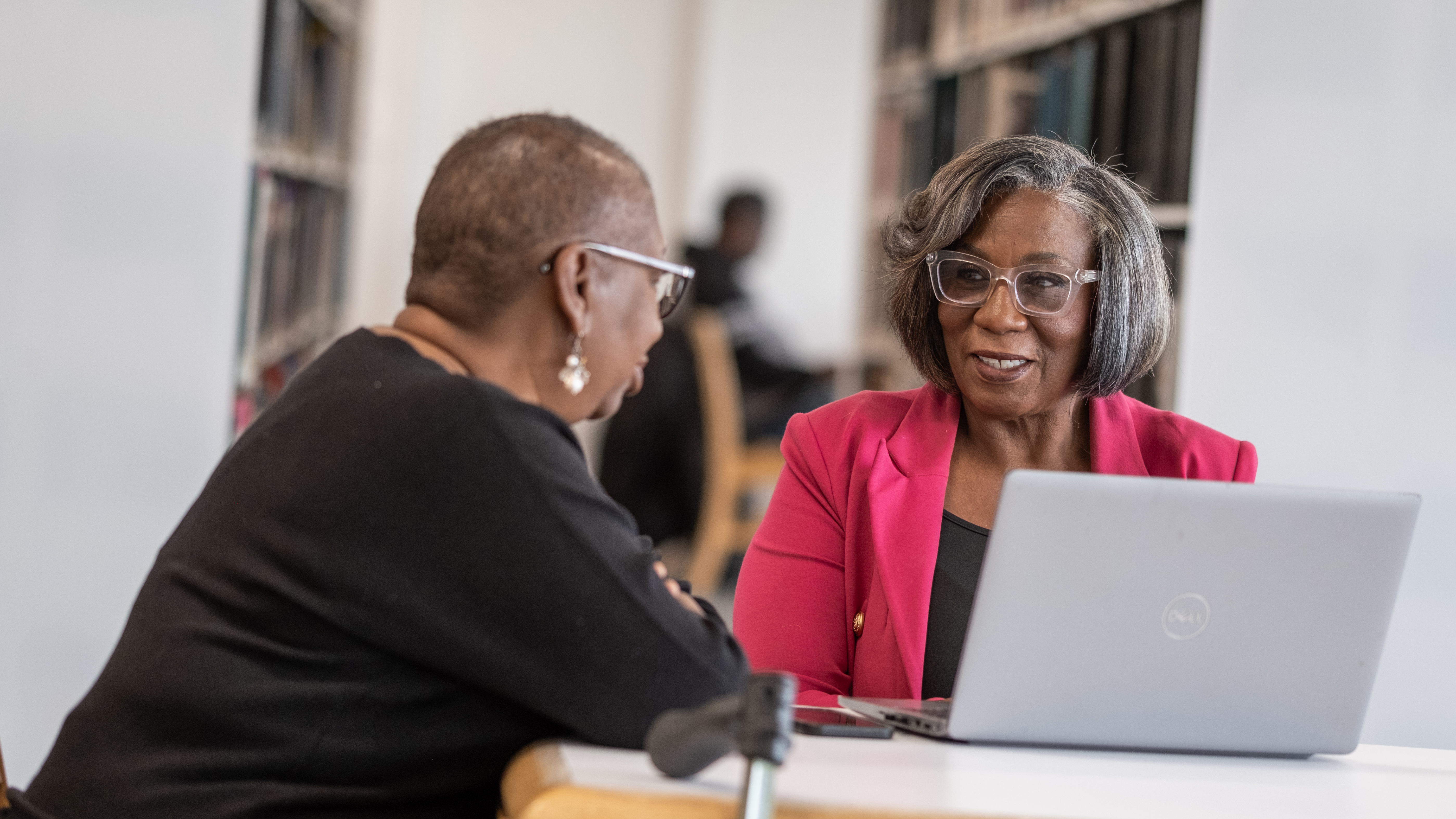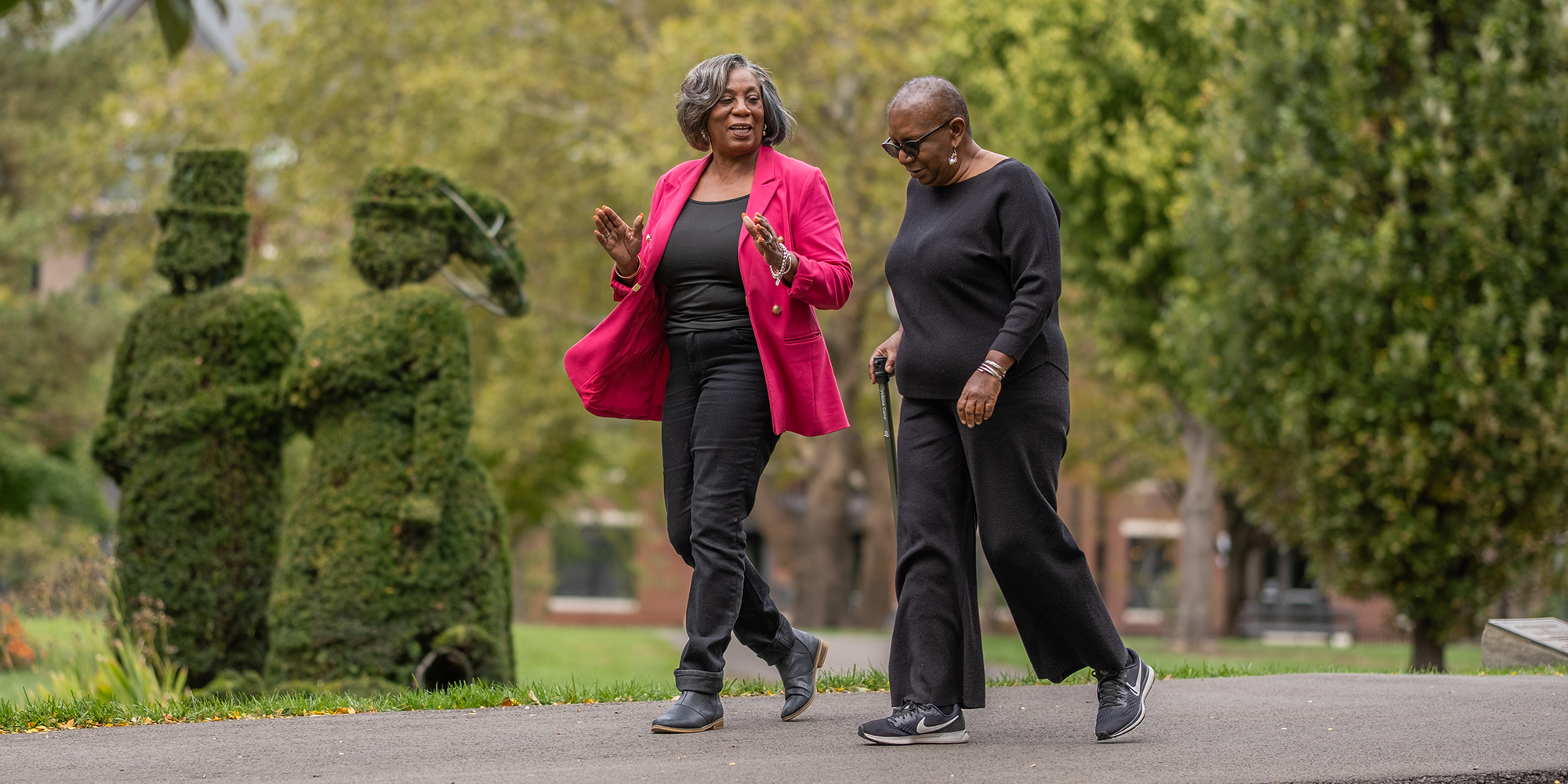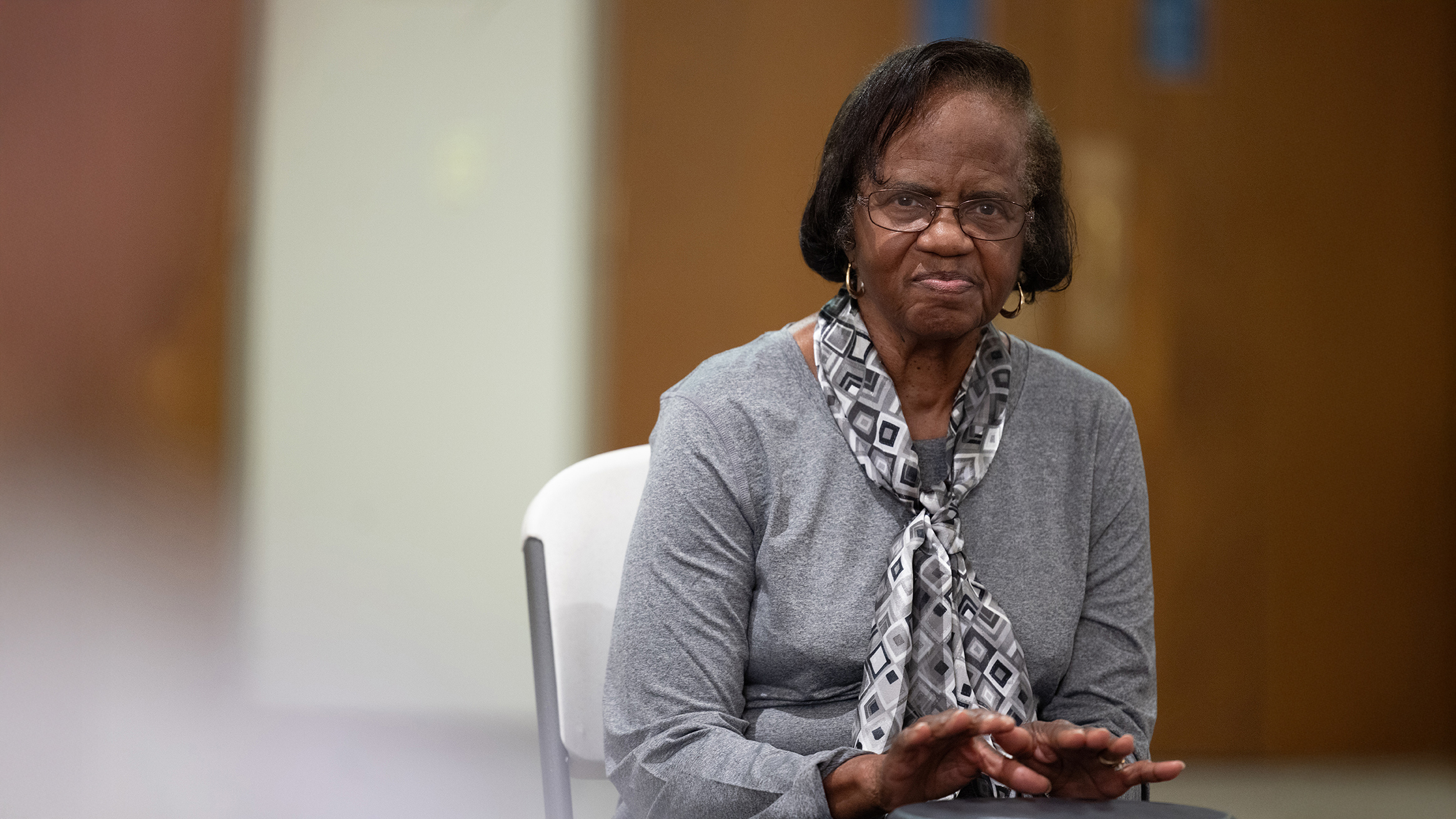Community health workers are changing local care
Ohio State trains community health workers to bridge care gaps and improve lives statewide
Joyce Calamese put off scheduling a routine preventive medical procedure for more than a decade until an Ohio State-trained community health worker strongly encouraged her to make the appointment. That intervention likely saved her life, the 67-year-old said.
“I did not take my colonoscopy until I was 62 years old … and they found a tumor, and because of the size, it was rated as Stage 4 cancer, and my doctor recommended that we do a series of procedures,” Calamese said.
“I was initially diagnosed on March 13, 2020 … I’m still here five years later,” Calamese said, smiling toward Delores Richardson, her community health worker who now works for Franklin County Public Health.
“As a part of my treatment program, I do have supportive people, and in addition to my family and some friends, I have my community health worker,” said Calamese, who lives on the east side of Columbus. “She’s been very supportive, helping me with appointments, education and staying on track. For example, about two weeks ago, she helped me think about nutrition.”
The 14-week, hybrid Community Health Worker Training Program at The Ohio State University’s College of Nursing trains participants like Richardson to be advocates, educators and motivators in their neighborhoods — especially those with larger populations of lower-income residents, said Shaunta Stanford, clinical assistant professor of practice and senior director of community-engaged academic pathways. Upon completion of the required class and clinical hours, participants earn certification as a community health worker from the Ohio Board of Nursing.
“The program began in 2014 as a workforce development initiative and the idea was to get community members involved in helping improve their surrounding communities,” Stanford said. “One way to do that was through community health workers, who are front-line public health workers bridging gaps so individuals can access health care. Because they come from the communities they serve, they often face the same obstacles, share similar backgrounds, speak the same language, and are trusted in ways that medical providers might not be.”

Stanford has been a nurse practitioner for 15 years and says she only treats patients when they come to the hospital. She is the first to say she doesn’t necessarily know the challenges they face in their communities or the other responsibilities affecting their health. “Community health workers are successful because they look at the whole person, not just conditions like hypertension or diabetes. They address the broader factors impacting someone’s health,” she said.
Ohio State recently graduated its 32nd cohort of the Community Health Worker Training Program, bringing the total number of graduates to nearly 650. Most of the participants live in Franklin County, but the university has trained students from Cuyahoga, Delaware, Fairfield, Licking, Lorain, Montgomery and Trumbull counties. Students receive about 100 hours of instruction on social determinants of health, chronic diseases, special populations and motivational interviewing. They learn how to engage individuals where they are and help them improve their health. Students also complete 130 practicum hours at community-based and non-profit organizations to gain face-to-face experience working with clients.
Most of the participants live at or below the poverty level and are able to take the course for free, paid for through an external grant. Some are sponsored by their employers who want a certified community health worker as part of their staff.
Calamese and Richardson have remained close since the cancer diagnosis.
“When I received the diagnosis and started gathering my support network, I reached out to Delores,” Calamese said. “She was one of the people I needed in my tribe and was very supportive of others with cancer, which was another link for me with her.” Calamese also has diabetes and high blood pressure, both of which Richardson helps her keep under control.
Richardson has a caseload of 30 clients, including Calamese, all of whom she says she has a personal connection with. They often meet at home, in libraries or other private locations to discuss a myriad of health and social issues.
“Seven or eight years ago, community health workers were not viable in our communities,” Richardson said. “Now, they’re used in many areas in our medical system and we have been kind of planted in different communities to help those who are not able to help themselves in different areas … and the conversations are about their health, how they met milestones like a colonoscopy or a mammogram, or things like getting insurance to pay for what they are supposed to pay for.”

Many of her clients have diabetes, depression or hypertension — the common conditions she and other community health workers see, and for which they routinely process medical referrals. Addressing infant mortality is one of Richardson’s many passions. “It isn’t only from poor moms or rich moms — it happens across communities,” she said.
Vinitra Murray, a certified community health worker for the Trumbull Community Action Program in Warren, Ohio, and a more recent graduate of Ohio State’s program, often helps young single mothers get connected to services like rental assistance or free diapers for their children.
“My job includes helping people with obstacles that they can’t yet overcome,” Murray said. “We help people with their rent, gas bills, electric bills, water bills, … we help mothers who are pregnant to receive diapers, wipes, personal care items — all here in the community.”
Like other community health workers, she’s often there to just listen — all in the same community in which she grew up.
“My interaction with them is to be able to assist them, advocate for them,” Murray said. “I generally tell them, ‘Don't worry, we’ll help you. We’ll get you through it. We’ll get you over that hump.’ We say, it’s not a handout, it’s a hand up.”
Stanford said the program is having an impact across the state since the hybrid learning model now allows students from anywhere to participate.
“Many students face challenges like homelessness, domestic violence or financial instability while taking the course. Our support helps them succeed, and then they can support others in their communities,” she said. “I like to think about it like a ripple effect: It starts with the student, but then spreads to their families, to their friends, to the communities, and then when we think about communities as a whole, now we’re talking about hundreds, thousands of people, that one person can impact.”



